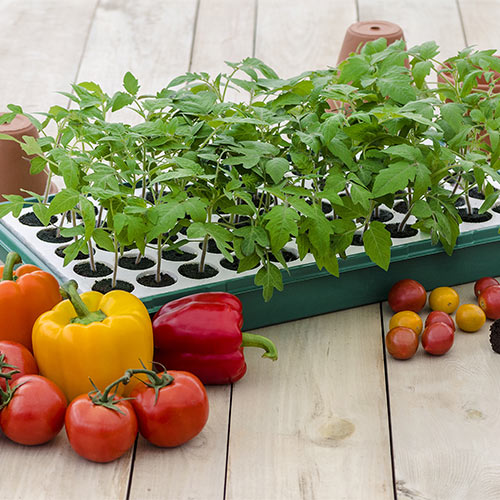Some Like It Warm
To sprout, most seeds prefer a temperature between 70 and 85 degrees (for specific temperatures, see the back of your seed packet). Seeds can be kept in any place that offers warmth. Windowsills can also work, but be sure to check them for drafts that could potentially end your seedling’s short life. You can check by running a lighter or candle along your windowsills; if the light flickers or goes out, you know you’ve got a serious draft. If your windowsills prove to be too drafty, you can use artificial lights.  The heat provided by an ordinary shop light offers plenty of warmth for germinating seeds. Once you’ve found a cozy spot for your seeds, it’s time to cover them with plastic (to keep in moisture) and wait for them to send their shoots above the soil line.
The heat provided by an ordinary shop light offers plenty of warmth for germinating seeds. Once you’ve found a cozy spot for your seeds, it’s time to cover them with plastic (to keep in moisture) and wait for them to send their shoots above the soil line.
They’re Alive!
Immediately following your first sprouts, remove the plastic covering to get essential oxygen to the young’ uns. These sprouts are not “true leaves”; they’re cotyledons, which existed within the seed and fed your plant during germination. You’re on the right track; true leaves will appear soon. Remember, even though they’ve sprouted, your seeds still need temperatures in the 60-to-80-degree range to ensure proper growth. Seeds also need light at this stage. If you’re growing with natural light, make sure the containers are raised a little above the sill to minimize the “stretching” seedlings that can experience in their efforts to get enough light and turn them regularly to keep them from growing lopsided.
Artificial light provided by fluorescent shop tubes or grow lights (household incandescent lights don’t offer the right light spectrum for plants) work best, just make sure they offer a combination of warm white and cool white light. Artificial light should be kept 1 – 4” above your seedlings’ tops. Pulley systems work especially well because you can adjust the lights as the seedlings grow. Seedlings need roughly 16 hours of exposure daily; using a timer on the lights is the easiest way to achieve this. Some gardeners leave the lights on continuously and say their plants have suffered no ill effects. The choice is yours; consult your seed packet for lighting instructions.

